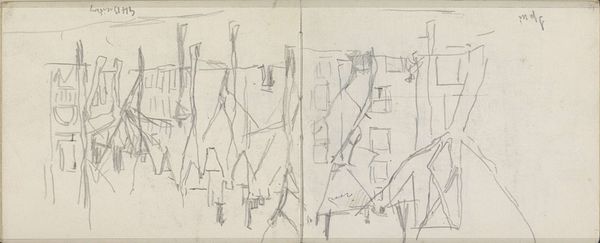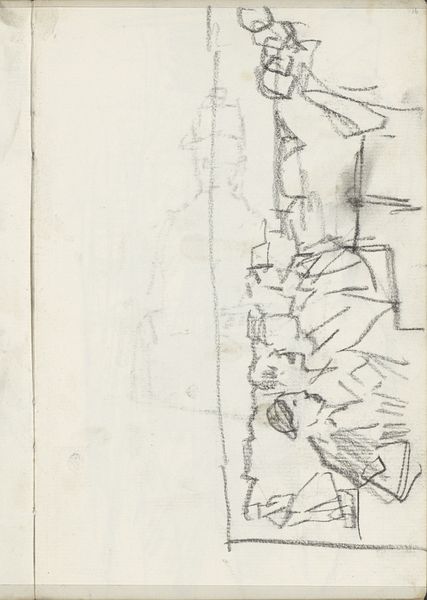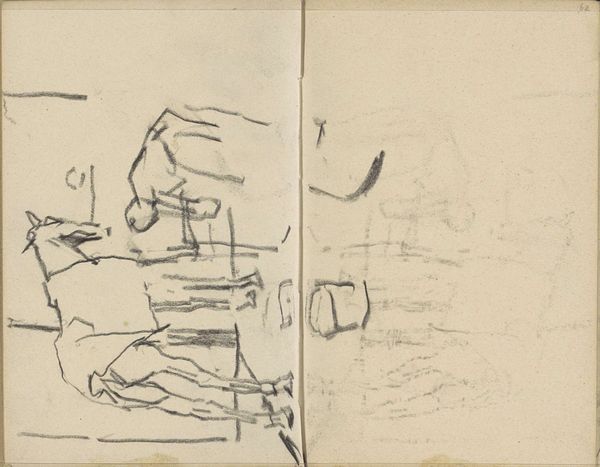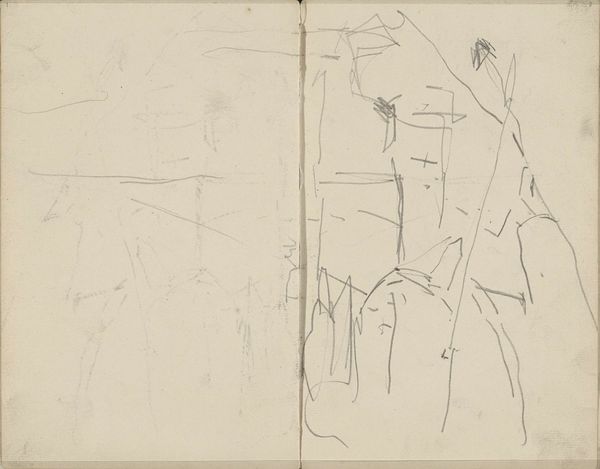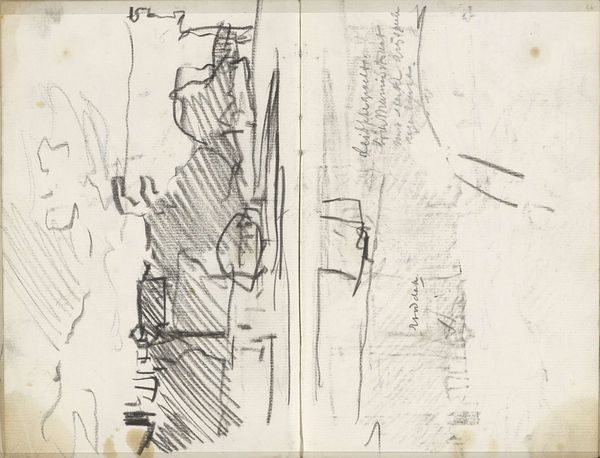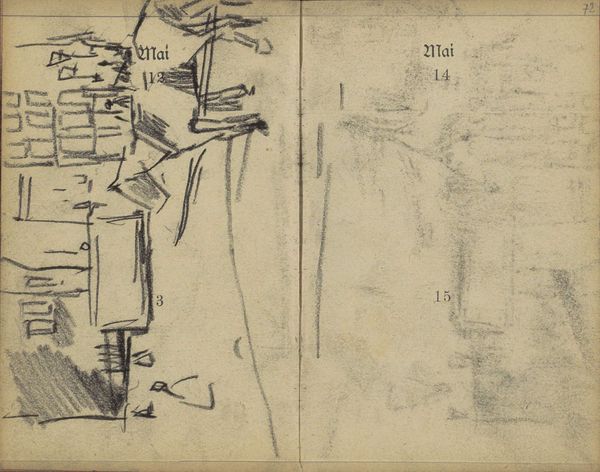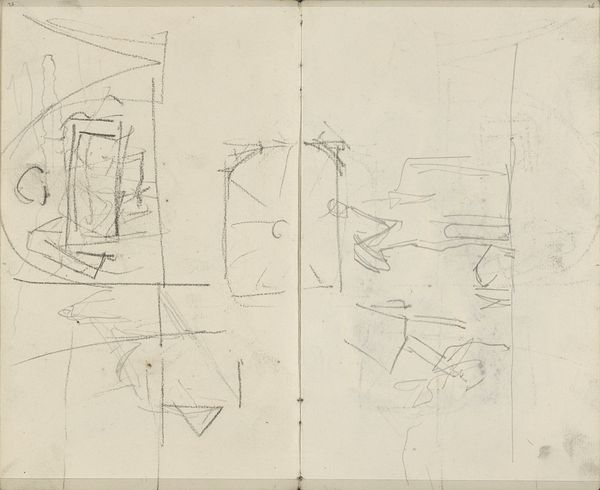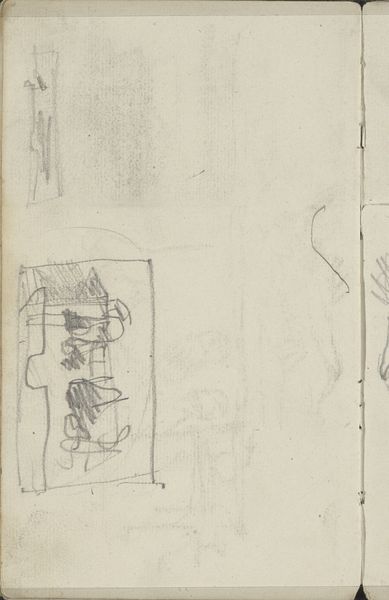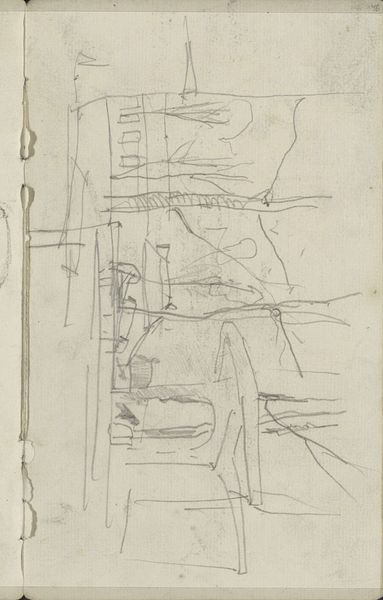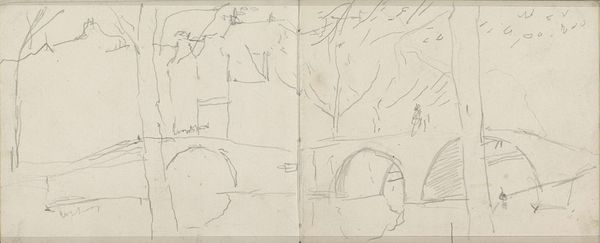
Lauriergracht te Amsterdam, gezien vanuit de Reestraat c. 1886 - 1891
0:00
0:00
drawing, pencil
#
drawing
#
amateur sketch
#
impressionism
#
incomplete sketchy
#
hand drawn type
#
landscape
#
personal sketchbook
#
sketchwork
#
ink drawing experimentation
#
pen-ink sketch
#
pencil
#
sketchbook drawing
#
cityscape
#
sketchbook art
#
initial sketch
Copyright: Rijks Museum: Open Domain
Curator: Breitner’s “Lauriergracht te Amsterdam, gezien vanuit de Reestraat,” created circa 1886-1891, presents us with a glimpse into his working method through a simple pencil and ink drawing. Editor: My initial feeling is one of quiet industry. It's raw, very bare bones – the Amsterdam canal seems almost ghostlike, but full of the potential for commerce and community. Curator: Precisely. It is, essentially, an early sketch. Consider Breitner’s artistic practice. He's capturing the urban landscape as he sees it – through quick, economical lines. It demonstrates an interest in the processes of perception and representation, rather than polished artistry. We are seeing labor immediately. Editor: Absolutely. And in that labor, we see the urban development transforming Amsterdam during Breitner's time. This sketch offers a behind-the-scenes perspective on urban expansion. I wonder how the rapid industrialization of the late 19th century impacted the daily lives of the people living alongside these canals. Was the growth and movement liberating or disorienting? Curator: An interesting point. By focusing on the materiality of this piece, on the deliberate lack of refinement, Breitner subtly critiques the prevailing art establishment. He champions observation and the unfiltered expression of the modern experience using humble material like pencil. The canal’s depiction hints at the infrastructure supporting trade, labor, and the burgeoning economy. Editor: Yes! And what about the buildings themselves? Are they sites of production, of homes, of both? How do those spaces contribute to the overall sense of place, and for whom? And what about the point of view? Who is allowed this perspective, and who is denied it? Breitner’s access to this vantage point surely reflects his socio-economic position and privilege as a male artist at the time. Curator: Those considerations absolutely resonate. And looking closely, we can observe areas of heavier, darker sketching in comparison to light faint outlines which speaks to Breitner’s active engagement with and study of the landscape he depicts. Editor: Viewing it today prompts a vital question. As urban environments and cityscapes evolve, are artists recording it from an actively engaged, ethical, and inclusive standpoint? And what roles can artists take on in the conversation about urban environments in an effort to address issues such as affordable housing, accessible services, and equal opportunities for residents. Curator: Well, considering that, this unassuming sketch contains multitudes—a testimony to Breitner's skill, but also an opening into broader cultural considerations around representation and materiality in a moment of rapid transformation. Editor: Exactly. A quiet little image, loudly resonating today.
Comments
No comments
Be the first to comment and join the conversation on the ultimate creative platform.

